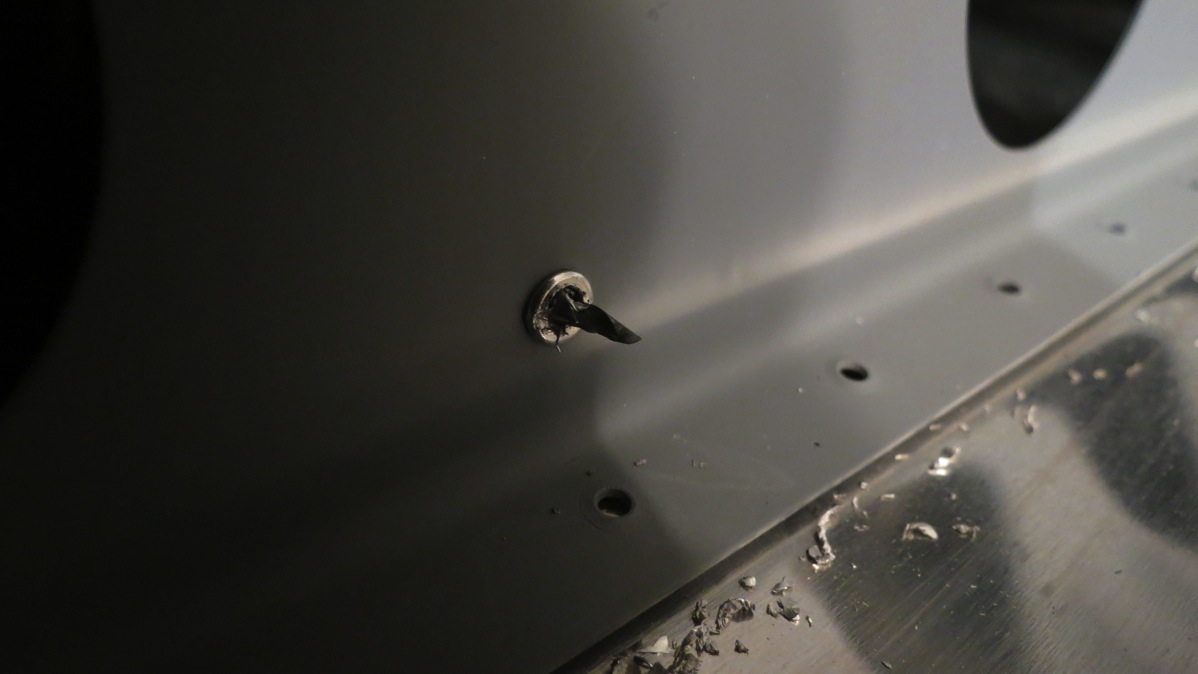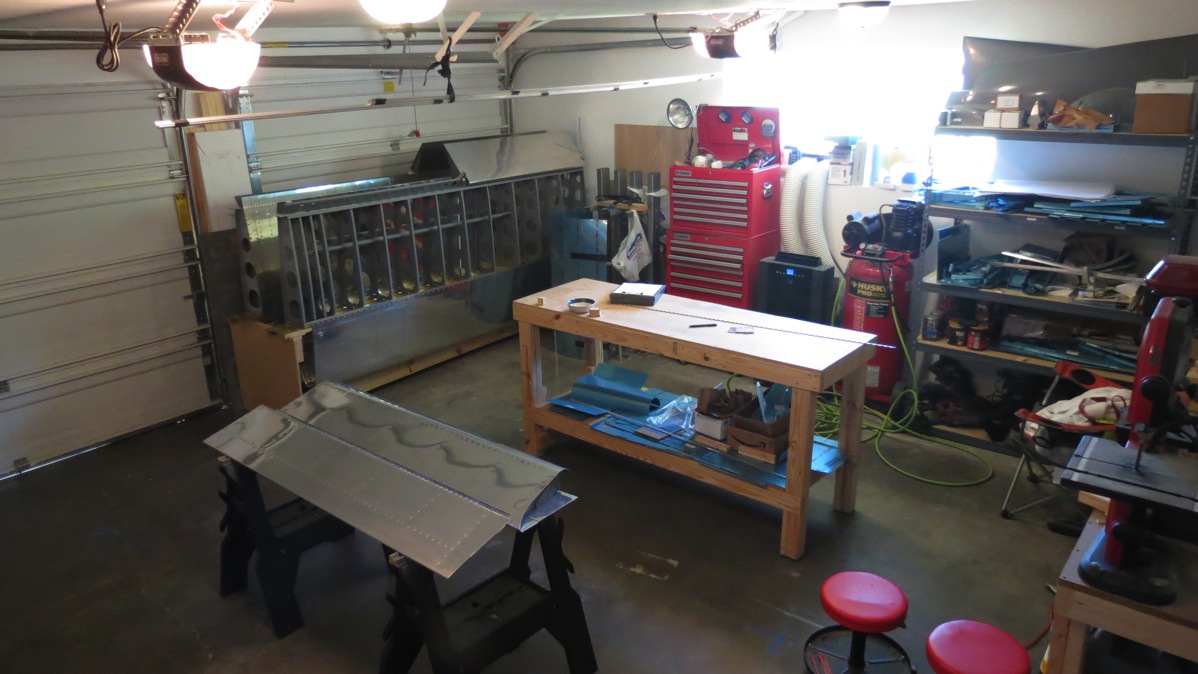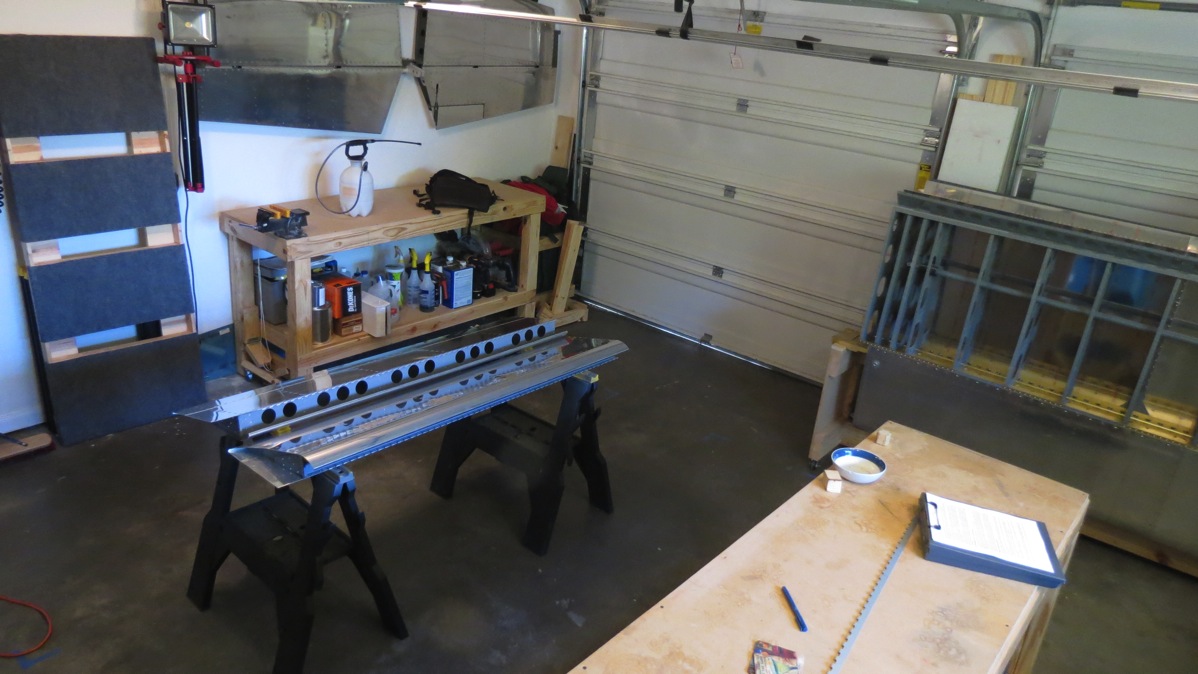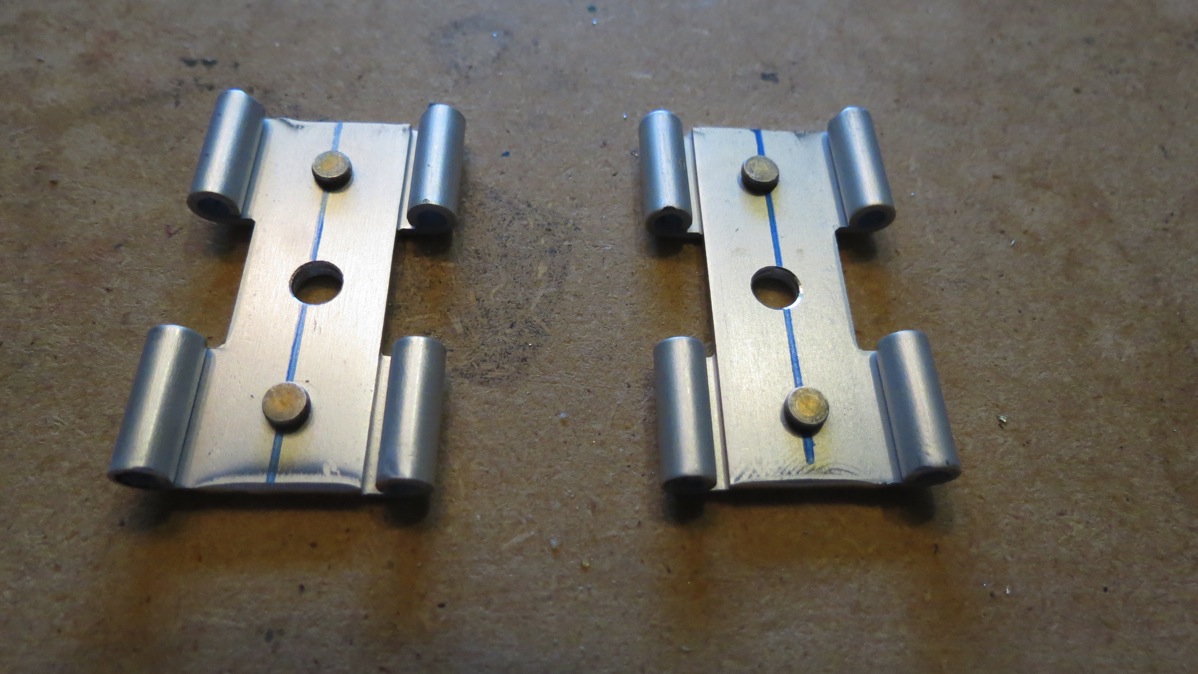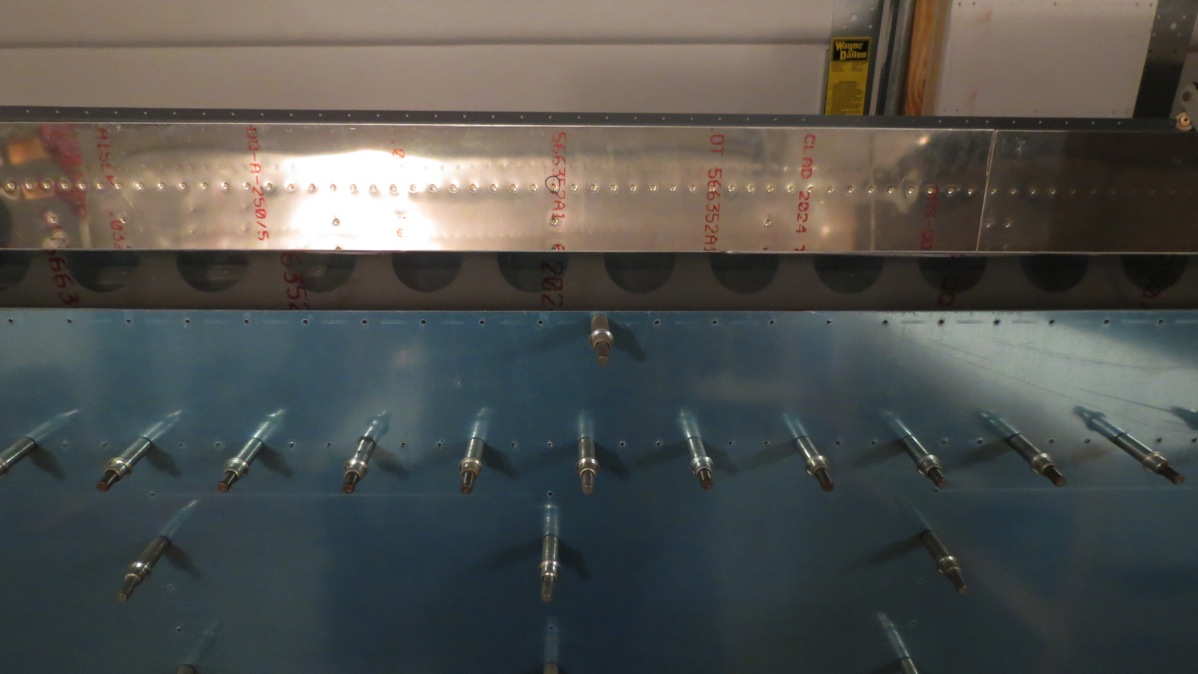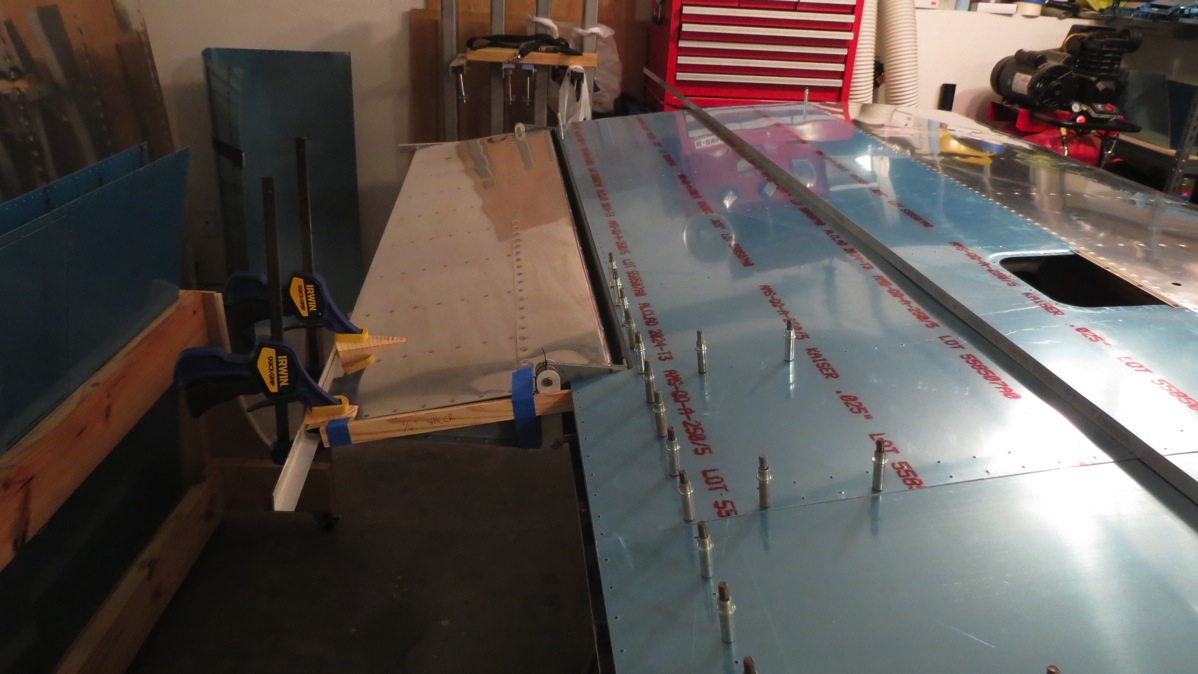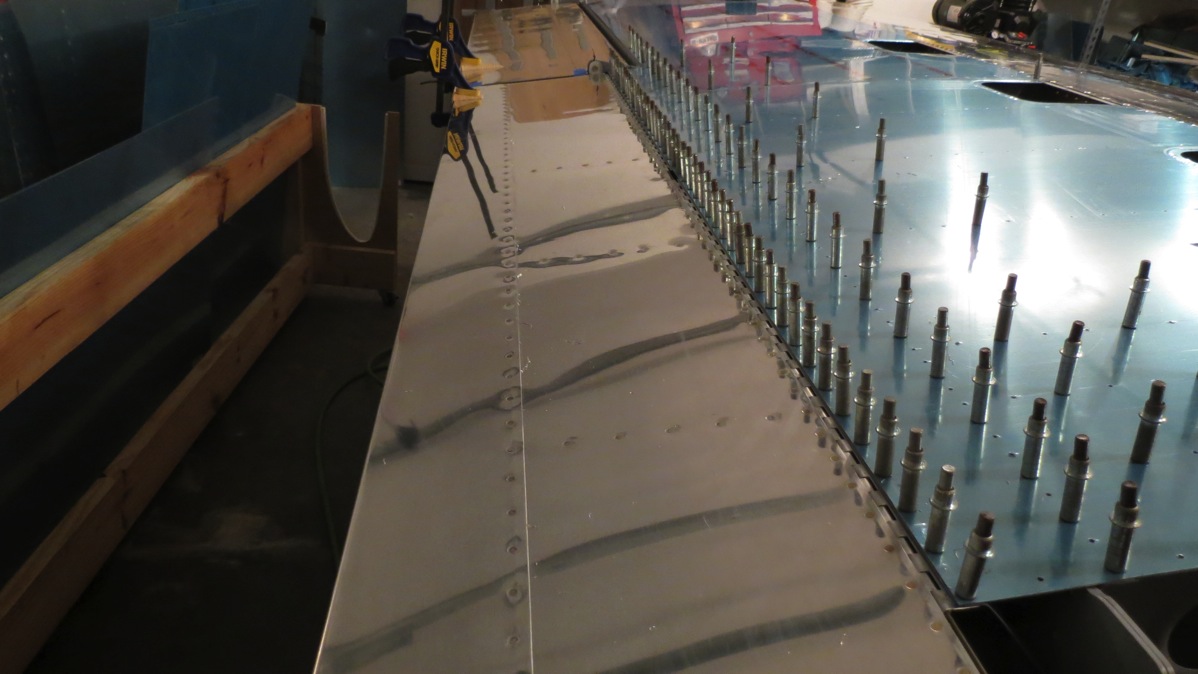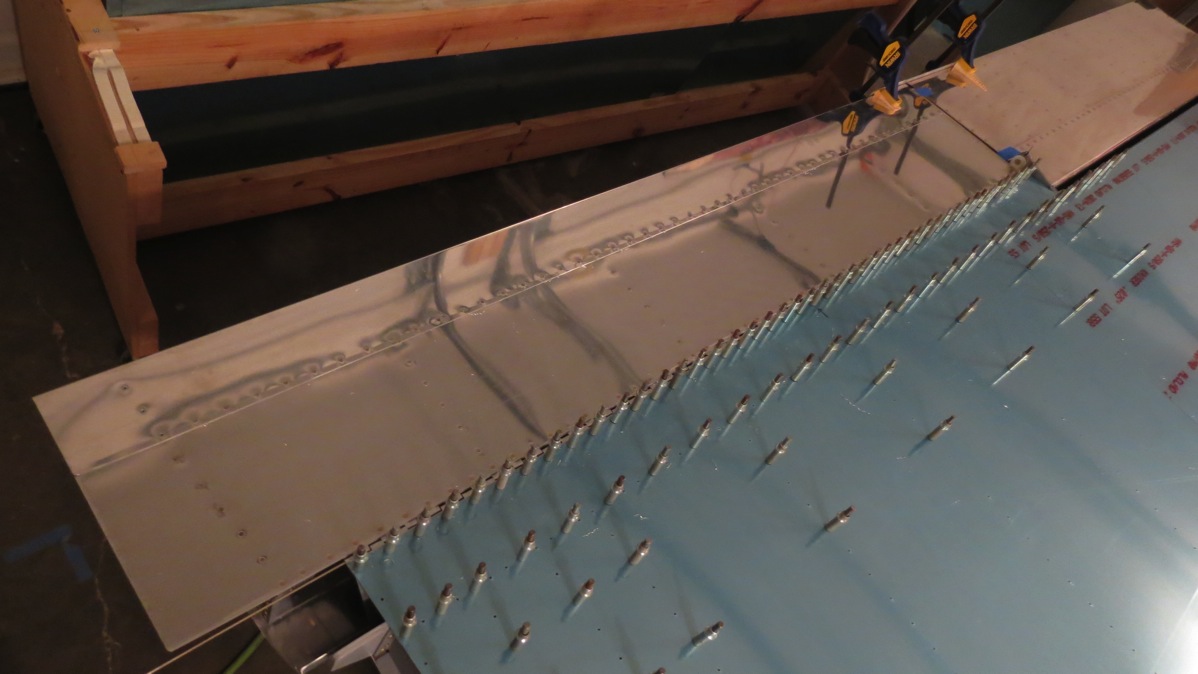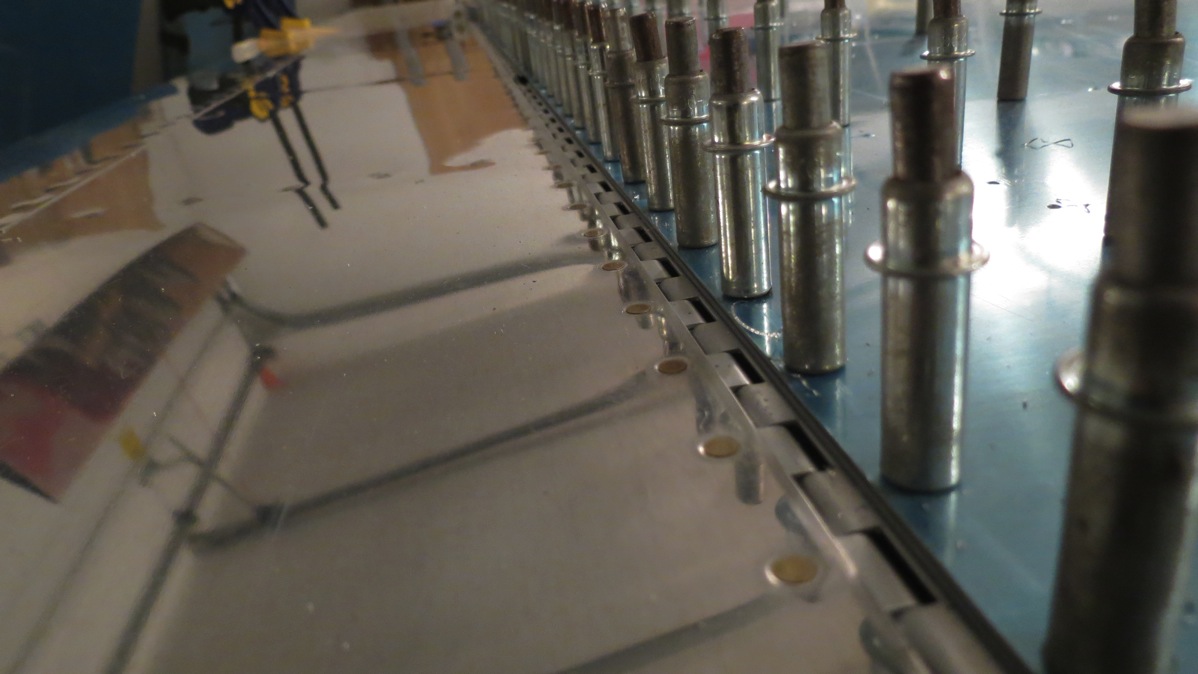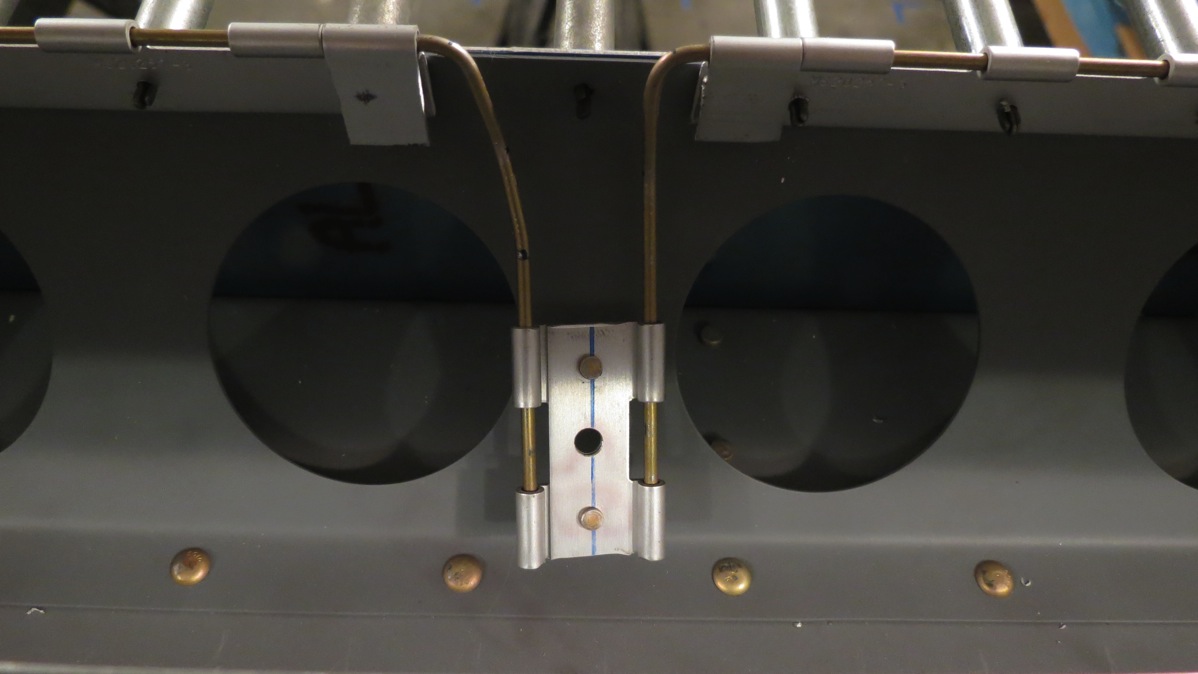Got rolling on riveting the right flap tonight. I’d hoped to get further, but Josie had to work late and couldn’t help me out, and some of this riveting is definitely better done with two people on the job. I’d intended to kind of document my riveting procedure in detail, since the instructions are rather sparse here, but of course that kind of fell by the wayside once I got going. It’s a wonder I even get any photos half the time…
Anyway, I started by riveting the interior ribs and the inboard rib to the bottom skin. I’m skipping the outboard rib for now; since its flanges face the outside of the flap, those rivets can be easily squeezed any time. First I squeezed the -4 rivets between the trailing end of the interior ribs and the pseudo-spar (Side note: I wonder if there’s a technical term for that that I should be using. My aero engineer coworker who reads this blog hasn’t made fun of me for calling it a pseudo-spar yet, so maybe I’m not too far off base.) Next I shot all the skin-run rivets. These were pretty straightforward and easy to do with the mini tungsten bucking bar:

The only issue I had with a rivet was this one on the inboard rib:

Note how the rivet sits right below the protruding part of the nutplate. I briefly tried shooting that rivet, using my narrow footed bucking bar, but it turned ugly pretty quickly. So I just drilled out the nutplate rivets, shot the offending rivet, and then reriveted the nutplate in place. That rivet on the left end of the nutplate clinched over a bit – it was tough to get the squeezer in there with the skin in the way – but since this is a nutplate, I’m not especially concerned with the rivet.
Next, I set the top skin on my work surface, slipped the bottom skin-rib assembly in place, and clecoed the line of holes that join the two skins. This is the riveting job that I figure should be done by two people. It’s pretty tight quarters back there where I’ll have to buck these rivets, and trying to shoot and buck is probably a recipe for disaster.
As for bucking those rivets, I’ve seen where guys used their back rivet plates to buck the rivets, but I don’t think it’s necessary. My mini tungsten bar is small enough to get on the rivet head, though it’ll be challenging to hold it straight. My plan for the moment is to hold the skin open with some wood blocks to improve my working room, sort of like this:

In that photo, you can see the little J-bend in the bottom skin, the pseudo spar I keep talking about. The row of rivets I have to shoot is just ahead of that. Once we’ve shot all those rivets, I’ll flip the assembly over, clamp it down tight to the work surface, and we can shoot the rest of the skin-rib rivets. After that, the rest should be a cakewalk; all the remaining rivets are either blind or accessible with a squeezer. Though it occurs to me as I write this that the downward-curving portion of the top skin may make doing the blind rivets between the spar and the ribs difficult. Oh well, we shall see.





















